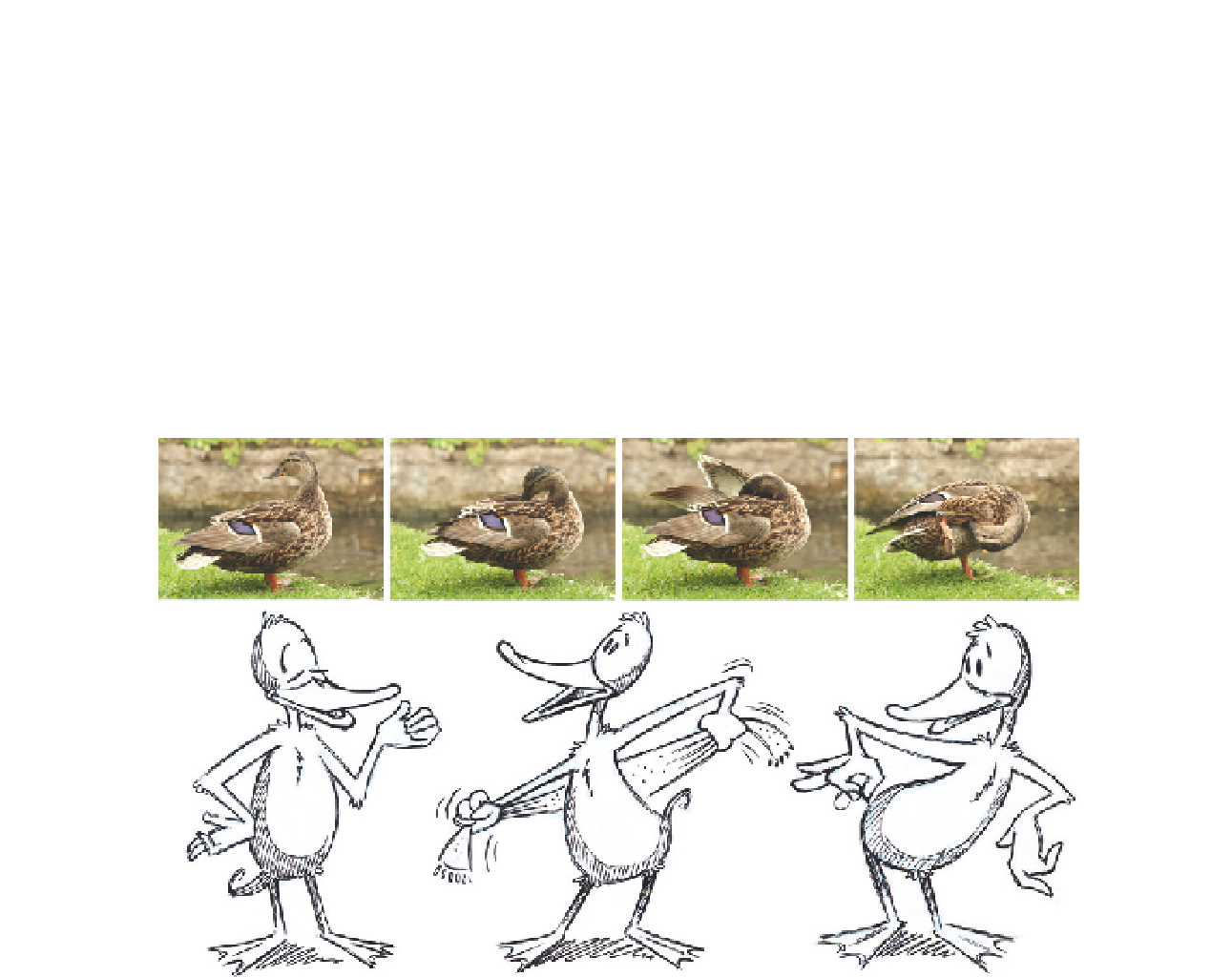Graphics Reference
In-Depth Information
Obviously, the need for such an analytical approach to dynamics is largely
dependent on the work being undertaken. It is difficult to see how the detailed
study of rabbits or ducks would have helped the likes of Chuck Jones or Tex
Avery in creating their particular brands of cartoon-based animation for Bugs
Bunny or Daffy Duck. So, for some animators such in-depth study might not be
relevant, but for others, particularly those working with figurative performance-
based subjects, such study is vital and the rewards of those efforts will be very
great. However, even for cartoonists such as Avery and Jones or animators
making completely abstract animation that, at least on the face of it, requires
less in-depth study of particular subjects, the study of motion and dynamics
will still repay the effort. If you choose to undertake a serious analysis of action,
I can almost guarantee that you will be a better animator as a result.
FIG 7.1
A duck and a cartoon duck
clean and preen in very different
ways.
Capturing Action
A range of methods and techniques is available to animators who want to
capture and record action for analysis that will suit the needs and fall within
the scope of the individual animator or studio, regardless of size. Some of these
methods are very specialized and require very specialized equipment that is
often rather expensive. However, options are available even to the animation
student who has somewhat limited resources. Here we consider some cheaper
options as well as the more elaborate and costly ones and see how they can
be applied to the study of dynamics. However, capturing and analyzing action

